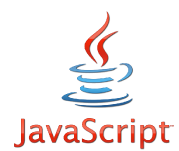


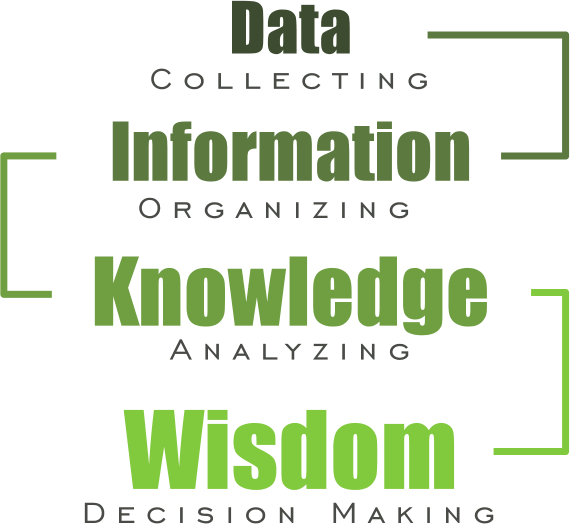
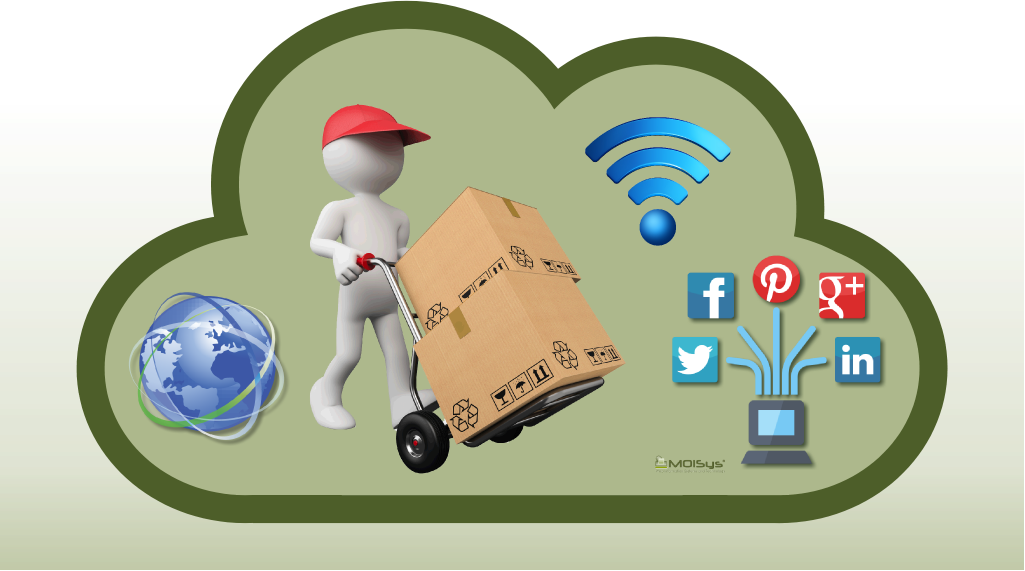
We provide Information Solutions in the Web ... Cloud.
At MOISys your web ... cloud needs are analyzed carefully, properly designed, and effectively and efficiently implemented. We implement our designs using the most current, proficient and powerful web development tools.
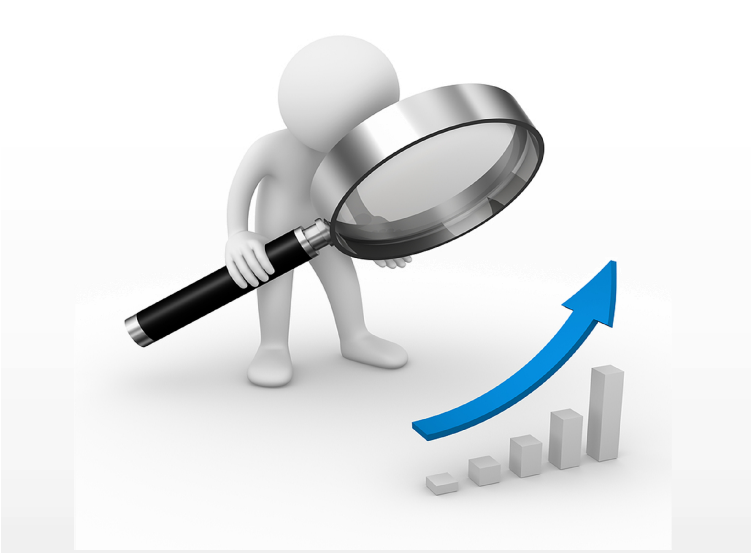
During the Analysis and Design phase of your web information project, we will:
- Determine the need for a website and/or application (app) to assist your business processes,
- Define the website system’s goals,
- Gather business requirements,
- Convert business requirements to website system requirements, including web pages and website navigation,
- Design both the database and the required website system processes.
Each client solution is tailored to their specific requirements.

We will Build, Test, and Implement the Analysis and Design of both
- The Database and
- The required Website System Processes.
We will either administer or assist you with both
- Getting your domain name registered, and
- Setting the hosting of your website.

We will advise your business on making sure that you are providing your customers, your prospects and other web site visitors with the right information about the products and/or services that you tender.
Then, your business will be able to update that information onto your website promptly and effortlessly.

According to the Cambridge dictionary, project is “a piece of planned work or an activity that is finished over a period of time and intended to achieve a particular purpose”. Every human activity is basically a component of a project, if not a project itself. The necessary activities to pursue a particular purpose require resources including time, people, supplies, and money.
Project management is the process of managing available resources to pursue a well-established goal (purpose) inside a predetermined period of time. For a goal to be achieved successfully, the project components must be defined clearly and objectively: scope, dateline, financial and human resources, and expected quality. Optimization of resources preserving quality must be intrinsic to the success of the project.
We use two specific tools to pursue optimization and success of web-cloud information system projects:
- Microsoft Project
A project management tool designed to assist a project manager in developing a schedule, assigning resources to tasks, tracking progress, managing the budget, and analyzing workloads.
- Microsoft Teams.
A business communication platform offering a workspace for chatting and videoconferencing, file storage, and software development integration.
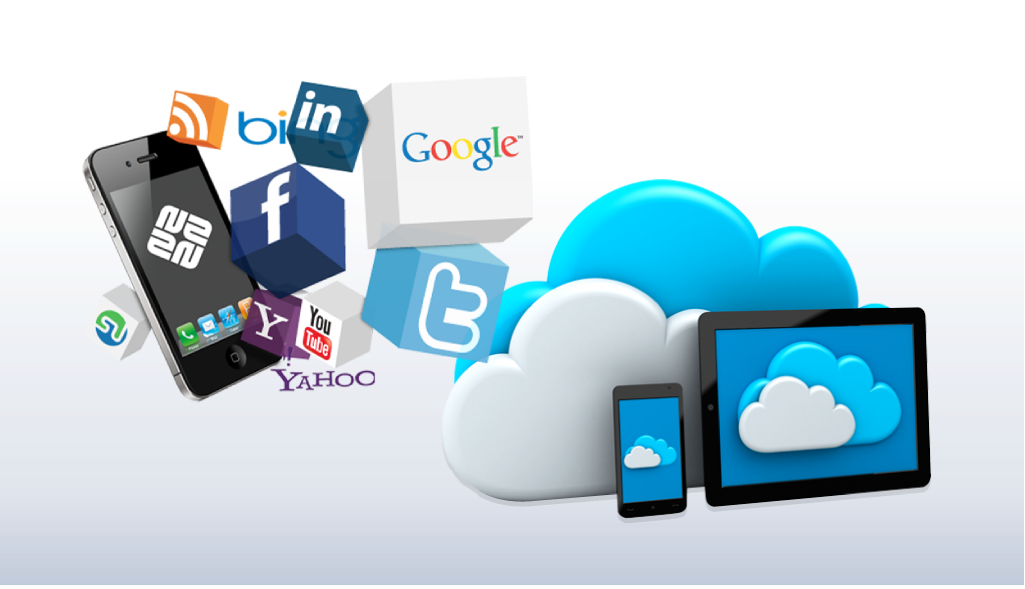
The Internet is now the designated global space for searching and buying products and services. The search engine is one of the critical channels for your success in the World Wide Web.
We optimize our web implementations for search engines making sure that high web rankings are established and that your business is easily found.
We can assist you with making sure that your website is found with the most popular search engines such as Bing, Google, Yahoo, and in the most visited Internet Yellow Pages websites.
We support the following main web development platforms and content management tools using their respectives integrated development environments (IDEs):
Information Technology (IT) could be defined as the application of computers and telecommunications equipment to store, retrieve, transmit and manipulate data. On the other hand, an Information System (IS) utilizes Information Technology to process the data generating information and knowledge through complementary networks of hardware and software that people and organizations use to perform their everyday activities. Any specific information system aims to support operations, management and decision making. In a broad sense, the term is used to refer not only to the information and communication technology (ICT) that an organization uses, but also to the way in which people interact with this technology in support of business processes. Artifical Intelligence (AI) has surfaced as the best terminology to refer to an Information System:
How much does anyone care about the differences between Information Systems and Information Technology? The view that projects go off the rails because they focus on Technologies rather than Systems. If we could persuade people to focus on Information Systems (IS) rather than Information Technology (IT), then projects would better deliver their true value.
Given the constant and rapid changes in IT/IS including Mobile and Cloud technologies, MOISys provides advice to your organization on what are the current best practices on IT and/or IS, including applications to manage and implement organizational change.
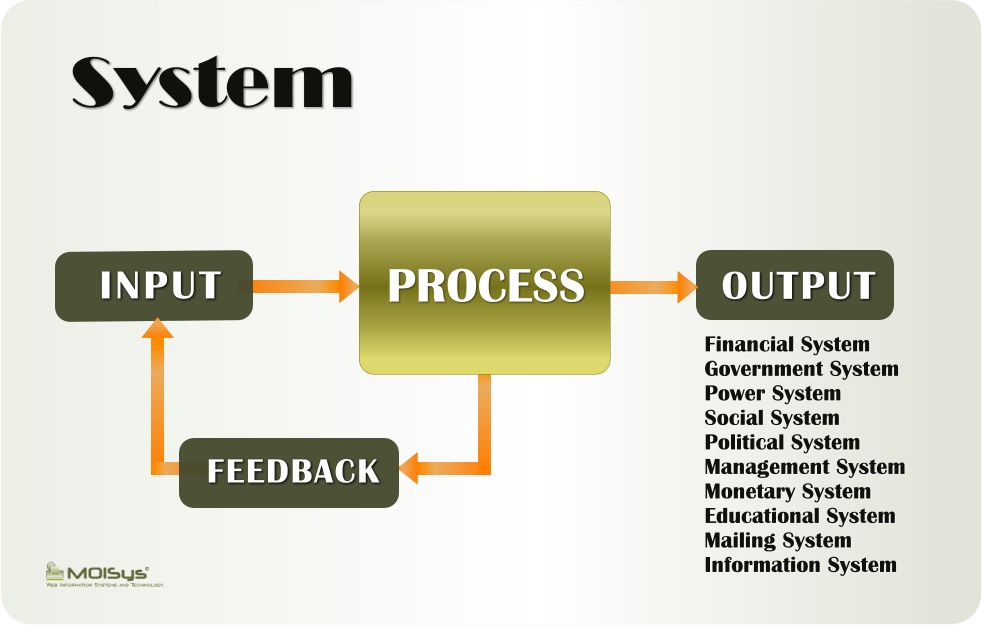
The word system has a long history which can be traced back to Plato (Philebus), Aristotle (Politics) and Euclid (Elements). It had meant "total", "crowd" or "union" in even more ancient times, as it derives from the verb sunìstemi, uniting, putting together. Evidently, there are many types of systems that can be analyzed both quantitatively and qualitatively.
A modern and simple definition may be devised as:
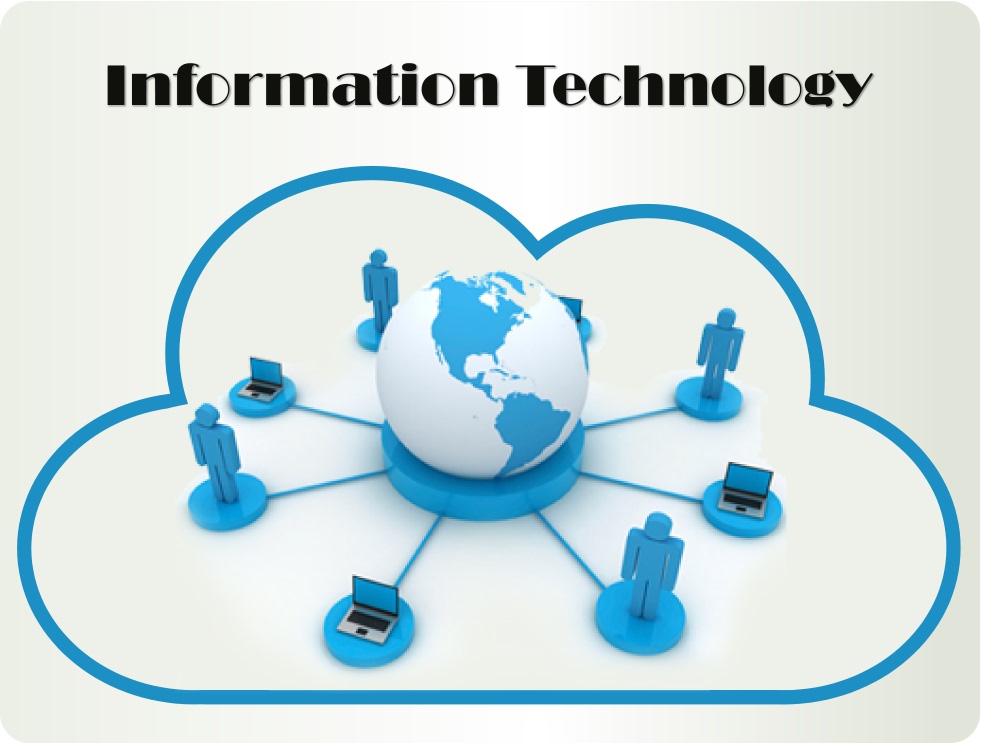
Information technology (IT) is the application of computers and telecommunications equipment to store, retrieve, transmit and manipulate data, often in the context of a business or other enterprise. The term is commonly used as a synonym for computers and computer networks, but it also encompasses other information distribution technologies such as television and telephones. Several industries are associated with information technology, such as computer hardware, software, electronics, semiconductors, internet, telecom equipment, e-commerce and computer services.
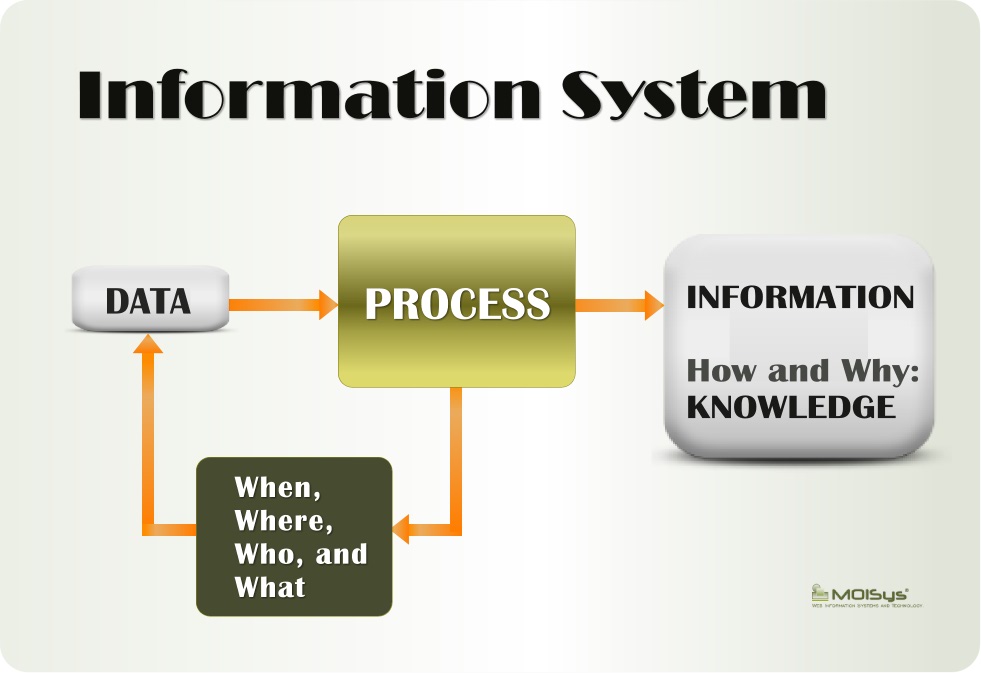
Information Systems is a large umbrella referring to systems designed to create, store, manipulate, or disseminate information. The term Information systems has been around a lot longer than the computer, or the term information technology.
Example of an information system is a pencil and a piece of paper. The two objects themselves are just tools, but together they create a system for writing (information). These days the two are sometimes thought to be synonymous, but that, in most cases is a misconception. Information technology falls under the information systems umbrella, but has nothing to do with systems per say. IT deals with the technology involved in the systems themselves, e.g. an information system like wiki.answers.com contains many information technologies.
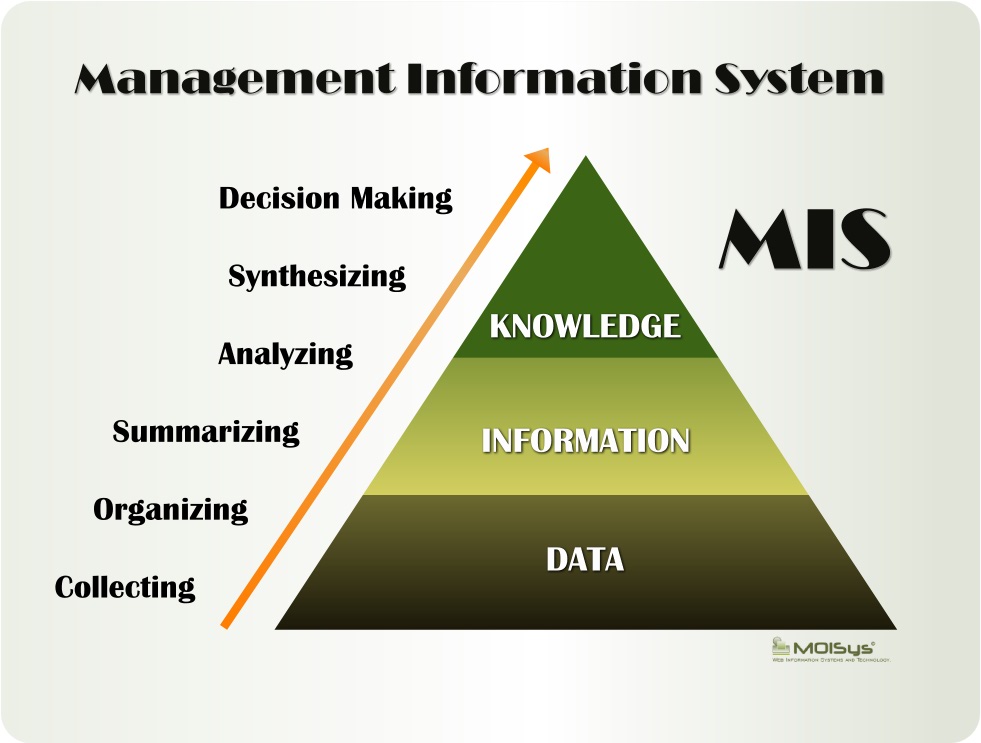
The most common of the information systems is a Management Information System (MIS) which gives the business managers the information that they need to make decisions. Organizational change management demands decisions from managers who want to pursue organizational performance improvement. Management information systems are more robust than other information systems because they are used to analyze and facilitate strategic and operational activities efficiently and effectively. A MIS represents the best tool on how individuals, groups, and organizations evaluate, design, implement, manage, and utilize systems to generate information to improve efficiency and effectiveness of decision making, including systems like Decision Support Systems, Expert Systems, and Executive Information Systems.
Servers, server operating systems, web-server software (IIS, Apache, et al), and code written for the web-server software (PHP, C#, VB, PERL, Ruby, et al). Even your computer and browser make up part of this information system. Like the pencil and paper example, each one of the mentioned parts of this information system in itself is an information technology. That being said, most people in the profession no longer make a distinction. Moreover, companies call their IS/IT department a wide range of titles based more on culture and tradition than anything else.

John McCarthy, a Professor Emeritus (as of 2001 Jan 1) of Computer Science at Stanford University, organized a conference in 1956 inviting many of the leading researchers of the time in a wide range of advanced research topics such as complexity theory, language simulation, neuron nets, abstraction of content from sensory inputs, relationship of randomness to creative thinking, and learning machines to Dartmouth in New Hampshire to discuss a subject so new to the human imagination that he had to coin a new term for it: Artificial Intelligence (AI).
McCarthy apparently selected the name Artificial Intelligence based on the idea of the neutrality of the concept given the variety of fields involved in the search for “thinking machines” which included cybernetics, automata theory and complex information processing. [The proposal for the conference said, “The study is to proceed on the basis of the conjecture that every aspect of learning or any other feature of intelligence can in principle be so precisely described that a machine can be made to simulate it.”] * Forbes Magazine.
Modern concepts of AI consider it a sub-field of computer science and how machines can imitate human intelligence (being human-like rather than becoming human). Here are some definitions from well knwon dictionaries:
“The theory and development of computer systems able to perform tasks normally requiring human intelligence, such as visual perception, speech recognition, decision-making, and translation between languages.” [The English Oxford Living.]
A branch of computer science dealing with the simulation of intelligent behavior in computers.
The capability of a machine to imitate intelligent human behavior. [Merriam-Webster]
Artificial Intelligence (AI), the ability of a digital computer or computer-controlled robot to perform tasks commonly associated with intelligent beings.” Intelligent beings are those that can adapt to changing circumstances. [The Encyclopedia Britannica]
Definitions of artificial intelligence begin to shift based upon the goals that are trying to be achieved with an AI system. Generally, people invest in AI development for one of these three objectives:
- Build systems that think exactly like humans do (“strong AI”).
- Just get systems to work without figuring out how human reasoning works (“weak AI”).
- Use human reasoning as a model but not necessarily the end goal.
Turns out that the bulk of the AI development happening today by industry leaders falls under the third objective and uses human reasoning as a guide to provide better services or create better products rather trying to achieve a perfect replica of the human mind.
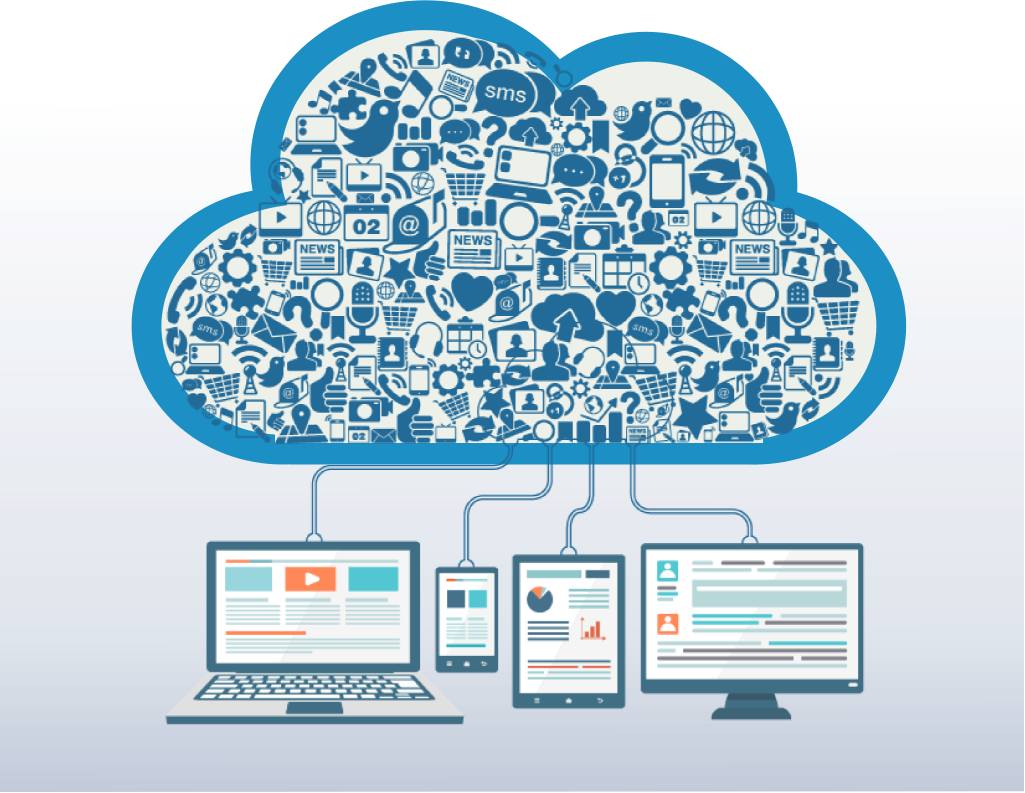
The concept of the Cloud has grown over time to refer to just about any information service that can be consumed rapidly via a telecommunications network connection through either the Web or Mobile applications.
The word Cloud simply means the Internet repository.
Cloud computing is the on demand availability of computer system resources, especially data storage and computing power, without direct active management by the user. The term is generally used to describe data centers available to many users over the Internet. Large clouds, predominant today, often have functions distributed over multiple locations from central servers.
The most common examples of Cloud Computing are social networks like Facebook, and Twitter, web information services like Amazon Web Services, Microsoft office 365, Google, online banking, online commerce, online universities, and so on.
MOISys will implement and manage your web application either in The Cloud or in your own data center if you have one.
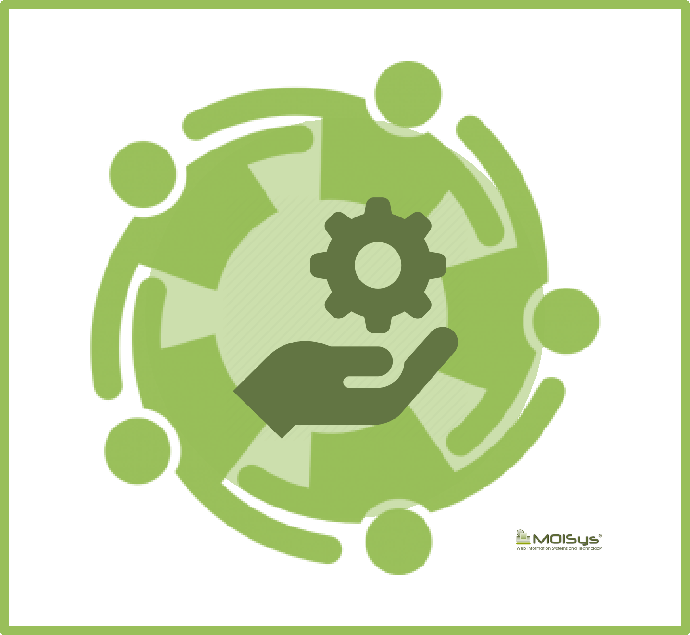
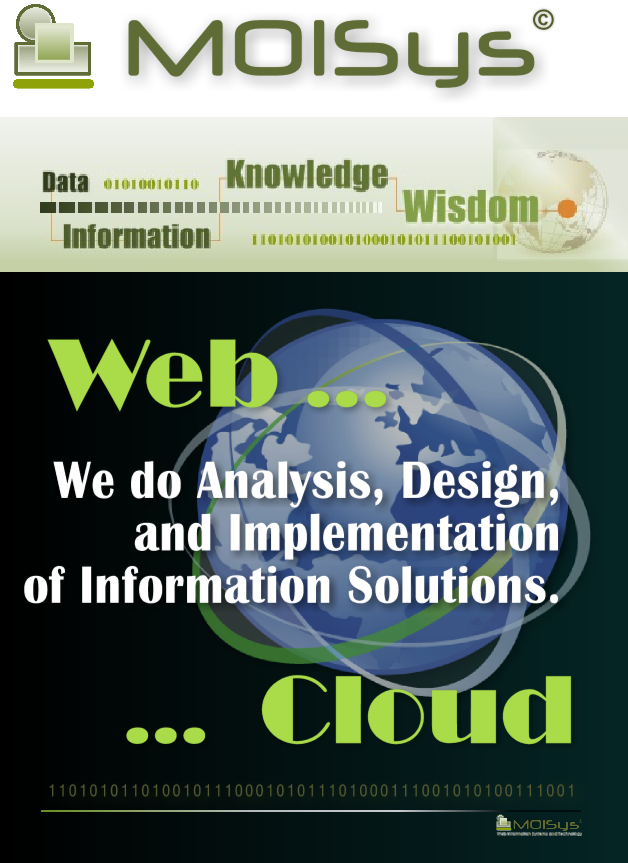
MOISys is a web and cloud design consulting firm that has accrued more than 12 years of experience in the analysis, design, and implementation of information systems on the web, the cloud, and mobile applications (Android and IOS).
- MOISys is a trademark registered in Arlington, Virginia, USA.
- We combine our formal undergraduate and graduate degrees in Computer Sciences, Management Information Systems, and Business Administration with our work experience with the leaders in the information revolution like Microsoft, Google, Facebook, Oracle, and IBM.
- We implement our solutions relying on a combination of critical factors including a clear understanding of the Business Requirements, the appropriate information technology, and our extensive experience, expertise, and best business practices.
- Our goal is to generate creative web work observing high levels of functionality, usability, and interactivity.
- Our purpose is to empower you with the right web technology to deliver the real business value of your products and/or services to your clients in an effective and pleasant web experience.
- Our commitment is to implement ideas that really work.
- Our mission is to bring wisdom to your web site, your cloud solution, and your mobile application.

MOISys is committed to preserve your privacy. This privacy policy notice applies to the MOISys Web site.
- When you communicate with MOISys through either our web site or any other communication service, we may ask you to provide us with some personal information such as your name, company name, address, phone number, and e-mail address.
- We do not sell, rent, or lease our customer lists to third parties.
- In order to provide our services in a more efficient way, we may provide information to other companies that provide services to us.
- The information we collect from you may be combined with information obtained from other companies or sources.
- In order to offer you a personalized experience, we may use cookies and other information technologies to keep track of your interactions with our site and services.
- We use the information that we collect from you to provide the services that you request. Our services may include the display of personalized content and advertising.
- We use your information to inform you of other products or services offered by MOISys, and to send you relevant notifications or survey invitations related to MOISys services.
Updated on March, 2019
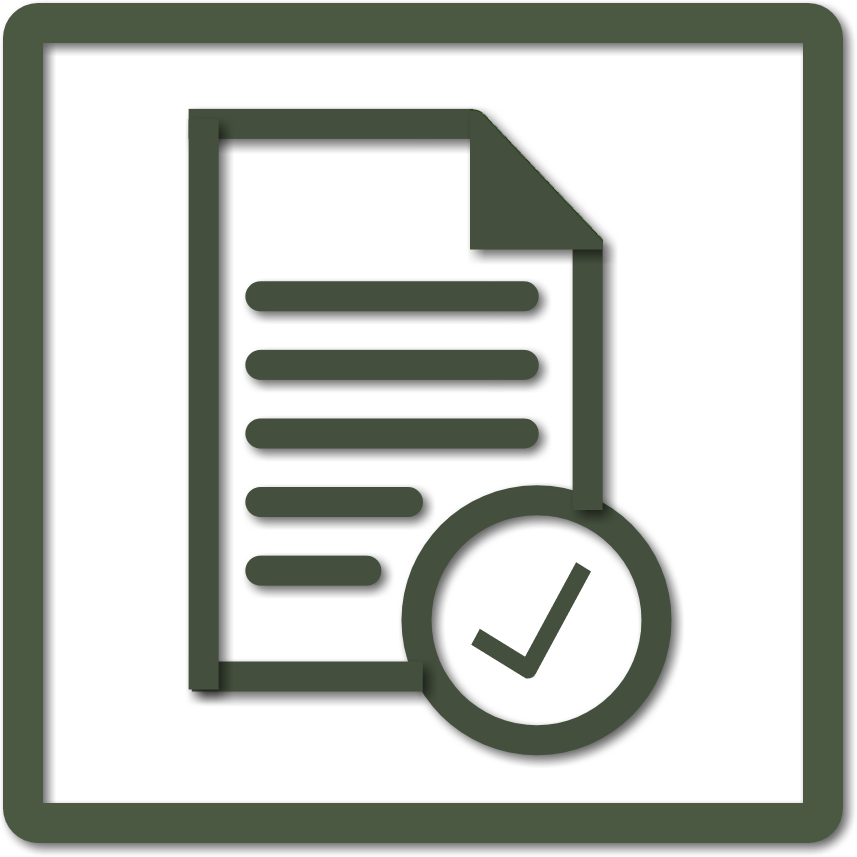
Web Services provided by MOISys are for your personal use only. You may not distribute, copy, modify, reproduce, publish, transfer, or sell any information, software, products or services obtained from MOISys Web Services.
The Web Services provided by MOISys may include e-mail communications, news groups, file attachments, and/or other message or Communication Services designed to enable you to communicate with MOISys. You agree to use the MOISys Communication Services observing the following, but not limited, terms of use. You agree that you will not:
- Use any material or information, including images or photographs, which are made available through the Services in any manner that infringes any copyright, trademark, patent, trade secret, or other proprietary right of any party.
- Upload files that contain viruses, Trojan horses, worms, corrupted files, or any other similar software or programs that may damage the operation of another's computer or property of another.
- Use the Communication Services in connection with surveys, contests, pyramid schemes, chain letters, junk email, spamming or any duplicative or unsolicited messages (commercial or otherwise).
- Publish, post, upload, distribute or disseminate any inappropriate, profane, defamatory, obscene, indecent or unlawful topic, name, material or information.
- Upload, or otherwise make available, files that contain images, photographs, software or other material protected by intellectual property laws, including, by way of example, and not as limitation, copyright or trademark laws (or by rights of privacy or publicity) unless you own or control the rights thereto or have received all necessary consent to do the same.
- Advertise or offer to sell or buy any goods or services for any business purpose, unless such Communication Services specifically allows such messages.
- Download any file posted by another user of a Communication Service that you know, or reasonably should know, cannot be legally reproduced, displayed, performed, and/or distributed in such manner.
- Falsify or delete any copyright management information, such as author attributions, legal or other proper notices or proprietary designations or labels of the origin or source of software or other material contained in a file that is uploaded.
- Restrict or inhibit any other user from using and enjoying the Communication Services.
- Defame, abuse, harass, stalk, threaten or otherwise violate the legal rights (such as rights of privacy and publicity) of others.
- Violate any code of conduct or other guidelines which may be applicable for any particular Communication Service.
- Harvest or otherwise collect information about others, including e-mail addresses.
- Violate any applicable laws or regulations.
- Create a false identity for the purpose of misleading others.
- Use, download or otherwise copy, or provide (whether or not for a fee) to a person or entity any directory of users of the Services or other user or usage information or any portion thereof.
MOISys has no obligation to monitor the Communication Services. However, MOISys reserves the right to review materials posted to the Communication Services and to remove any materials in its sole discretion.
MOISys reserves the right to terminate your access to any or all of the Communication Services at any time, without notice, for any reason whatsoever.
MOISys reserves the right at all times to disclose any information as MOISys deems necessary to satisfy any applicable law, regulation, legal process or governmental request, or to edit, refuse to post or to remove any information or materials, in whole or in part, in MOISys's sole discretion.
Materials uploaded to the Communication Services may be subject to posted limitations on usage, reproduction and/or dissemination; you are responsible for adhering to such limitations if you download the materials.
MISys does not claim ownership of the materials you provide MOISys (including feedback and suggestions) or post, upload, input or submit to any Services or its associated services for review by the general public, or by the members of any public or private community, (each a "Submission" and collectively "Submissions"). However, by posting, uploading, inputting, providing or submitting ("Posting") your Submission you are granting MOISys permission to use your Submission in connection with the operation of MOISys Internet businesses (including, without limitation, all MOISys Services), including, without limitation, the license rights to: copy, distribute, transmit, publicly display, publicly perform, reproduce, edit, translate and reformat your Submission; to publish your name in connection with your Submission; and the right to sublicense such rights to any supplier of the Services.
No compensation will be paid with respect to the use of your Submission, as provided herein. MOISys is under no obligation to post or use any Submission you may provide and MOISys may remove any Submission at any time in its sole discretion.
THE LINKS IN THIS AREA WILL LET YOU LEAVE MOISys'S SITE. THE LINKED SITES ARE NOT UNDER THE CONTROL OF MOISys AND MOISys IS NOT RESPONSIBLE FOR THE CONTENTS OF ANY LINKED SITE OR ANY LINK CONTAINED IN A LINKED SITE, OR ANY CHANGES OR UPDATES TO SUCH SITES. MOISys IS NOT RESPONSIBLE FOR WEBCASTING OR ANY OTHER FORM OF TRANSMISSION RECEIVED FROM ANY LINKED SITE. MOISys IS PROVIDING THESE LINKS TO YOU ONLY AS A CONVENIENCE, AND THE INCLUSION OF ANY LINK DOES NOT IMPLY ENDORSEMENT BY MOISys OF THE SITE.
MOISys OR ANY OF ITS EMPLOYEES DO NOT ACCEPT OR CONSIDER UNSOLICITED IDEAS, INCLUDING IDEAS FOR NEW ADVERTISING CAMPAIGNS, NEW PROMOTIONS, NEW PRODUCTS OR TECHNOLOGIES, PROCESSES, MATERIALS, MARKETING PLANS OR NEW PRODUCT NAMES. PLEASE DO NOT SEND ANY ORIGINAL CREATIVE ARTWORK, SAMPLES, DEMOS, OR OTHER WORKS. THE SOLE PURPOSE OF THIS POLICY IS TO AVOID POTENTIAL MISUNDERSTANDINGS OR DISPUTES WHEN MOISYS'S PRODUCTS OR MARKETING STRATEGIES MIGHT SEEM SIMILAR TO IDEAS SUBMITTED TO MOISYS. SO, PLEASE DO NOT SEND YOUR UNSOLICITED IDEAS TO MOISys OR ANYONE AT MOISYS. IF, DESPITE OUR REQUEST THAT YOU NOT SEND US YOUR IDEAS AND MATERIALS, YOU STILL SEND THEM, PLEASE UNDERSTAND THAT MOISys MAKES NO ASSURANCES THAT YOUR IDEAS AND MATERIALS WILL BE TREATED AS CONFIDENTIAL OR PROPRIETARY.
You agree to access MOISys website and its contents at your sole risk. MOISys website is available to you “as is" and with all possible errors not being detected by our debugging procedures. MOISys does not offer any kind of warranty, express or implied, as to the correctness, completeness, worth, suitability, free of viruses or other harmful components, or non-infringing of third party rights, or appropriateness of any of its web contents.
MOISys cannot be liable for any damages or injury, including but not limited to those caused by any failure of performance, error, omission, interruption, deletion, defect, delay in operation or transmission, computer virus, communication line failure, theft or destruction or unauthorized access to, alteration of, or use of record, whether for breach of contract, tortious behavior, or negligence or under any other theory or cause of action.
The MOISys Terms of Use are made effective as of the date and time of either a-) when you use the MOISys website or b-) the date and time of electronic acceptance. The fact that you browse or use the services of MOISys web site implies that you have read, understand, acknowledge and agree to be bound by all the Privacy Policies, the Terms of Use, and the applicable Product Agreements of MOISys web site.
By submitting any content to be included in any of our services, you grant us an unrestricted license (i) to use the content for the purpose of designing and implementing the services that you have requested to MOISys, and (ii) to display screenshots of your web site online, in marketing materials, or in any other manner we determine necessary.
Except for the content provided by you, the design and implementation of your web site on your behalf by us belong to us, and all such design and implementation are subject to copyright, trademark, patent, and other intellectual property laws of the United States and foreign countries. We grant you an unrestricted license to use the design and implementation of your web site so long as your Agreement of Services remains active and in good standing. Cancellation of your Agreement of Services terminates your license to use the Design created for you.
You agree to prevent any unauthorized copying of the design and implementation made for you. Unless otherwise specifically provided in the Agreement of Services with MOISys, no right or license under any copyright, trademark, patent, or other intellectual property right or license is granted by Agreement of Services. We reserve all rights not expressly granted herein.
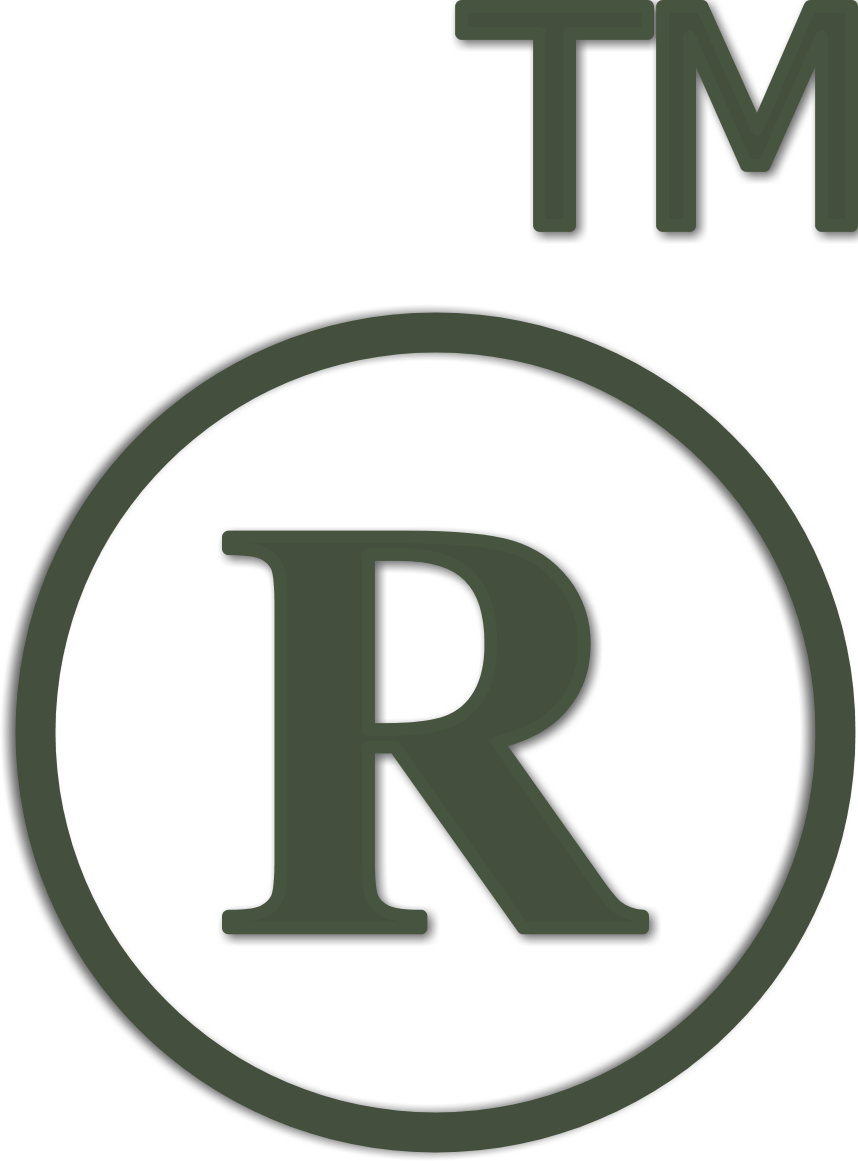
A Trademark, Trade Mark, or Trade-Mark (TM) is a recognizable sign, design, or expression which identifies products or services of a particular source from those of others, although trademarks used to identify services are usually called service marks. The trademark owner can be an individual, business organization, or any legal entity. A trademark may be located on a package, a label, a voucher, or on the product itself. A Registered Trade Mark is used by the owner of a Trademark that has been registered. Trademark rights generally arise out of the use of, or to maintain exclusive rights over, that sign in relation to certain products or services.
MOISys® is a registered trademark of MOISys in Arlington, Virginia, USA. All other names, logos, trademarks, images, and any other web objects belong to their respective owners.
Microsoft®, Bing®, Silverlight®, and Windows® are either registered trademarks or trademarks of Microsoft® Corporation in the United States and/or other countries.
To the extent a name or logo is not trademarked on this website does not constitute a waiver of any and all intellectual property rights their owners or their subsidiaries have established in any of their products, features, or services names or logos, including royalty free and free for commercial and personal use objects.









